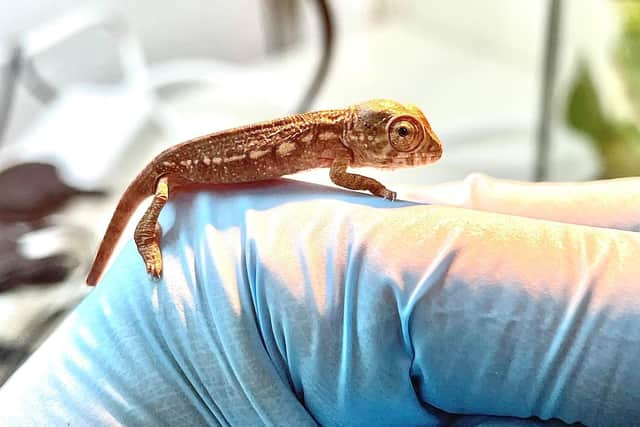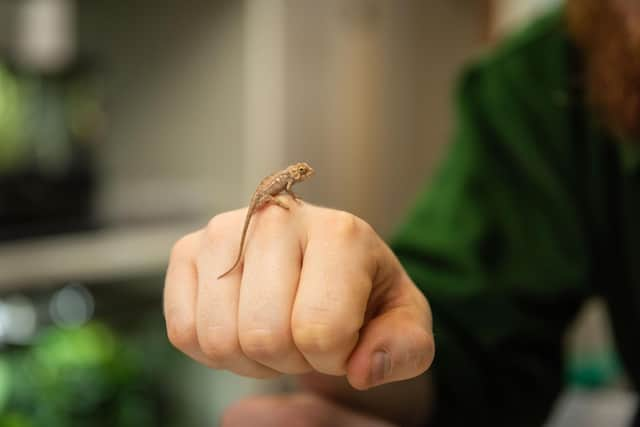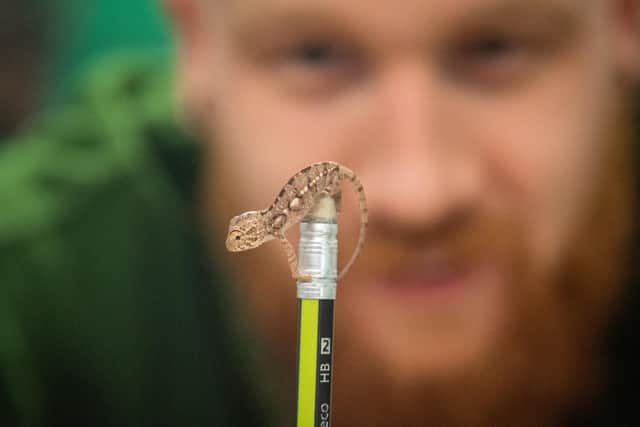Baby panther chameleon hatches at Whipsnade Zoo
This article contains affiliate links. We may earn a small commission on items purchased through this article, but that does not affect our editorial judgement.
and live on Freeview channel 276
A tiny Panther chameleon (Furcifer pardalis), has hatched at ZSL Whipsnade Zoo.
The 3cm-long baby chameleon was photographed by zookeepers perching on pencils and scampering up a keeper’s finger, after it hatched from its egg on Sunday, November 7.
Advertisement
Hide AdAdvertisement
Hide AdThe little lizard has been nick-named “Titch” by keepers, until they are able to identify whether it is male or female. The Zoo hopes the miniature colour-shifter will be joined by siblings, who have not yet hatched.


Team leader Alex Cliffe said: “This intricate, tiny creature is a wonderful addition to ZSL Whipsnade Zoo. They are doing very well, snacking on fruit flies and exploring their environment.”
The infant chameleon can currently change its hue from dark brown to light brown at night-time, but within the next few months, will develop its famous colour-changing properties that allow it to become an explosion of kaleidoscopic colour, like its parents.
The top layer of a chameleon’s skin contains two layers of special cells called iridophores, which, in turn, contain pigments and nanocrystals.
Advertisement
Hide AdAdvertisement
Hide AdThese nanocrystals are in a variety of sizes, shapes and arrangements and the chameleon can alter these arrangements to reflect light in different ways, enabling them to change colour.


They control the nanocrystal arrangement by relaxing or exciting the skin, so that the crystals move closer together or further apart.
Alex added: “People think that chameleons change colour for camouflage, and whilst that is sometimes true, the primary role of their incredible colour-changing ability is associated with social signalling and communication, or as a response to changes in their environment, like temperature or humidity.”
A chameleon’s tongue is also highly modified. They can project their tongues to distances longer than their body-length.
Advertisement
Hide AdAdvertisement
Hide AdThey also have a very wide field of vision, thanks to their unusual eyes, which feature fused upper and lower eyelids containing a small aperture which the pupils of their eyes can see through.


Each eye can pivot and focus independently, allowing them to view two objects simultaneously.
Zookeepers eventually plan to move the baby chameleon to the Madagascar zone inside its freshwater aquarium, but visitors can see the baby’s rainbow-ready father there already, along with the Zoo’s 9500 other animals, by booking tickets online.
For more news from the Dunstable area see www.lutontoday.co.uk/topic/dunstable.